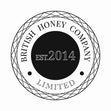You have no items in your shopping cart.
Spring & Summer Favourites back in stock!
KEEPR'S HONEY
WHY KEEPR'S HONEY
The healthy, nutritious, natural alternative to sugar.
Pure honey is naturally sweet and has become a healthier and tastier option over processed sugars and sweeteners. Honey contains many vitamins, minerals and natural antioxidants which helps maintain good health and build immunity against sickness.
Keepr’s provides pure 100% raw honey straight from the hive, retaining all it’s natural goodness. We believe every jar of honey should be as fresh tasting as possible, which is why we let our bees do the work by themselves.
We have a wide range including, Cotswold, Apple Blossom, Borage, Heather, Wild Flower, Mature, as well as our renowned manuka Honey Blend (known for its health benefits).
HOW IS HONEY MADE
Made By Nature
Honey starts as flower nectar collected by bees, which gets broken down into simple sugars stored inside the honeycomb. The design of the honeycomb and constant fanning of the bees' wings causes evaporation, creating sweet liquid honey. Honey's colour and flavour varies based on the nectar collected by the bees. For example, honey made from orange blossom nectar might be light in colour, whereas honey from wildflowers might have a dark amber color.
To Hive
On average, a hive will produce about 65 pounds of surplus honey each year. Beekeepers harvest it by collecting the honeycomb frames and scraping off the wax cap that bees make to seal off honey in each cell. Once the caps are removed, the frames are placed in an extractor, a centrifuge that spins the frames, forcing honey out of the comb.
To Home
After the honey is extracted, it’s strained to remove any remaining wax and other particles. Some beekeepers and bottlers might heat the honey to make this process easier, but that doesn’t alter the liquid's natural composition. After straining, it's time to bottle, label and bring it to you. If the ingredient label says “pure honey,” nothing was added from bee to hive to bottle. Source Charles NashWhy Honey and not antibiotics?
The National Institute for Health and Care Excellence (NICE) and Public Health England (PHE) have said that honey could be effective at reducing the symptoms of acute coughs rather then antibiotics. Read full article below.
https://www.nhs.uk/news/heart-and-lungs/honey-not-antibiotics-recommended-coughs/CRYSTALLISATION
COURTESY OF WIRED.COM
A common misconception is that honey that has crystallised has “gone bad” or that it is a sign of contamination. No! It’s actually a sign of high quality honey. Don’t throw your crystallised honey away, there is a simple way to restore it to its former glory.
Three things make honey more likely to crystallise:
Honey is a super-saturated solution of two sugars: glucose and fructose. Since it’s super-saturated, it’s a natural chemical process that some of the sugars eventually come out of solution. Honey will even crystallise when it’s still in the comb.
- Temperature
- The ratio of glucose and fructose in the honey
- Pollen
Here’s a simple break down what’s happening in your honey, and what you can do about it.
TEMPERATURE
Honey will crystallise in the hive if the temperature goes below 50ºF (10ºC), and honey will crystallize in your containers if you have a cold cupboard cabinet. Finding a warmer spot to store your honey will slow crystallisation.
It’s fairly simple to turn your honey back into a smooth liquid again by heating it. The best way to do this is by placing your honey in a bowl of warm water and slowly letting it warm up. Microwaving overheats the honey and doesn’t heat evenly, so that’s not recommended.
The problem is, as soon as your honey cools down, it will begin to firm up again. The simplest way to deal with this is to embrace your lovely honey lumps, and acquire a taste for crystallised honey. After a few sessions of heating and cooling, your honey will lose that wonderful aroma, and just become a sugary syrup.
If you really must have smooth runny honey, try heating a smaller batch, rather than the whole container. Honey also keeps best in glass, rather than plastic, and glass is much better for reheating.
THE RATIO OF GLUCOSE AND FRUCTOSE IN THE HONEY
Honey is a super-saturated solution of two sugars: glucose and fructose. The proportions of these two sugars are characteristic of the plants the bees fed on to make their honey. It’s the glucose that crystallizes, so some types of honey are more resistant to crystallisation because they have low glucose.
Honey originating from different flower sources will crystallise at different rates. There really isn’t an easy way for someone who isn’t a honey foodie to know which honeys crystallize faster or slower, but this is a good excuse to experiment with the flavours and aromas of different plant honeys.
POLLEN
Pollen in honey is normal, and acts as a sort of honey provenance. Pollen in honey verifies what plants the bees are feeding on. Bees are fuzzy, so while they are drinking nectar to make honey, they get covered with pollen.
Honey with pollen in it is great honey, but crystallisation happens faster when there are small particles available to build on. Natural, pure honey has a lot of those in the form of pollen grains.
A lot of mass-produced honey is now filtered to remove pollen. This does create a more shelf-stable honey, and it is clearer and brighter in colour. However, the problem with over processed honey is you don’t know where it came from, or what kind of plants the bees were feeding on. Filtering makes it easier for honey to be processed and shipped longer distances and means that many different kinds of honey can be blended together undetectably.
How can you get the best honey? Buy local. And by local, look for something from a beekeeper or farm that is in your town or village, with a traceable address and name.
Embrace crystallised honey. It’s the result of a natural process.
NUTRITION
COURTESY OF LIVESTRONG.COM
A healthy natural sweetener, raw honey offers many nutritional benefits without the man-made chemicals found in many other forms of sweeteners. Although nutrition facts vary slightly depending on the floral variety, they remain similar as a whole.
CALORIES
Each tablespoon of raw honey contains 64 calories and is fat-free, cholesterol-free and sodium-free. The average composition of raw honey is approximately 80 percent carbohydrates, 18 percent water and 2 percent vitamins, minerals and amino acids.
CARBOHYDRATES
Packed with natural sugar -- primarily fructose and glucose -- raw honey is high in carbohydrates. Each tablespoon contains 17 grams of carbohydrates, 16 of which are sugars. A 2001 University of Memphis study reports raw honey is an effective carbohydrate for boosting endurance during exercise.
VITAMINS AND MINERALS
Raw honey is rich in vitamins and minerals. Vitamin B6, thiamine, niacin, riboflavin and pantothenic acid are common vitamins found in raw honey, although amounts vary depending on the floral source of the honey. Calcium, copper, iron, magnesium, manganese, phosphorus, potassium, sodium and zinc are abundant minerals in raw honey.
ANTIOXIDANTS
Raw honey also contains antioxidants, present in the form of polyphenols, which help fight off free radicals that contribute to many serious diseases.
MANUKA HONEY
It is said that over 80% of manuka honey on the 2014 global market was fake. It maybe higher now. When purchasing it is said that buying UMF certified, raw Manuka honey is the only way to make sure the manuka honey you buy has the most benefits.
Manuka honey, is only produced in New Zealand by bees that pollinate the Manuka bush, is one of the most unique and beneficial forms of honey in the world.
Manuka has a wonderful history of medicine
- Ancient Egyptians, Assyrians, Chinese, Greeks and Romans employed honey for dressing wounds and diseases of the intestine.
- Similar to garlic, honey exhibits remarkable anti-bacterial activity. It destroys many pathogenic organisms including Salmonella, Shigella, Escherichia coli, and Helicobacter pylori. Best of all, it poses no threat to beneficial microbes.
- In an inflammatory model of colitis, honey proved effective as prednisolone treatment.
- Studies indicate that honey may possess anti-inflammatory activity and stimulate immune responses within a wound.
- Research demonstrated the anti-inflammatory effects of honey after ingestion.
- Honey prevents reactive oxygen species (ROS)-induced low density lipoprotein (LDL) oxidation in some in vitro studies. Thus, it exhibits beneficial cardiovascular protection.
- Honey acted to inhibit tumor development in an experimental bladder cancer.

